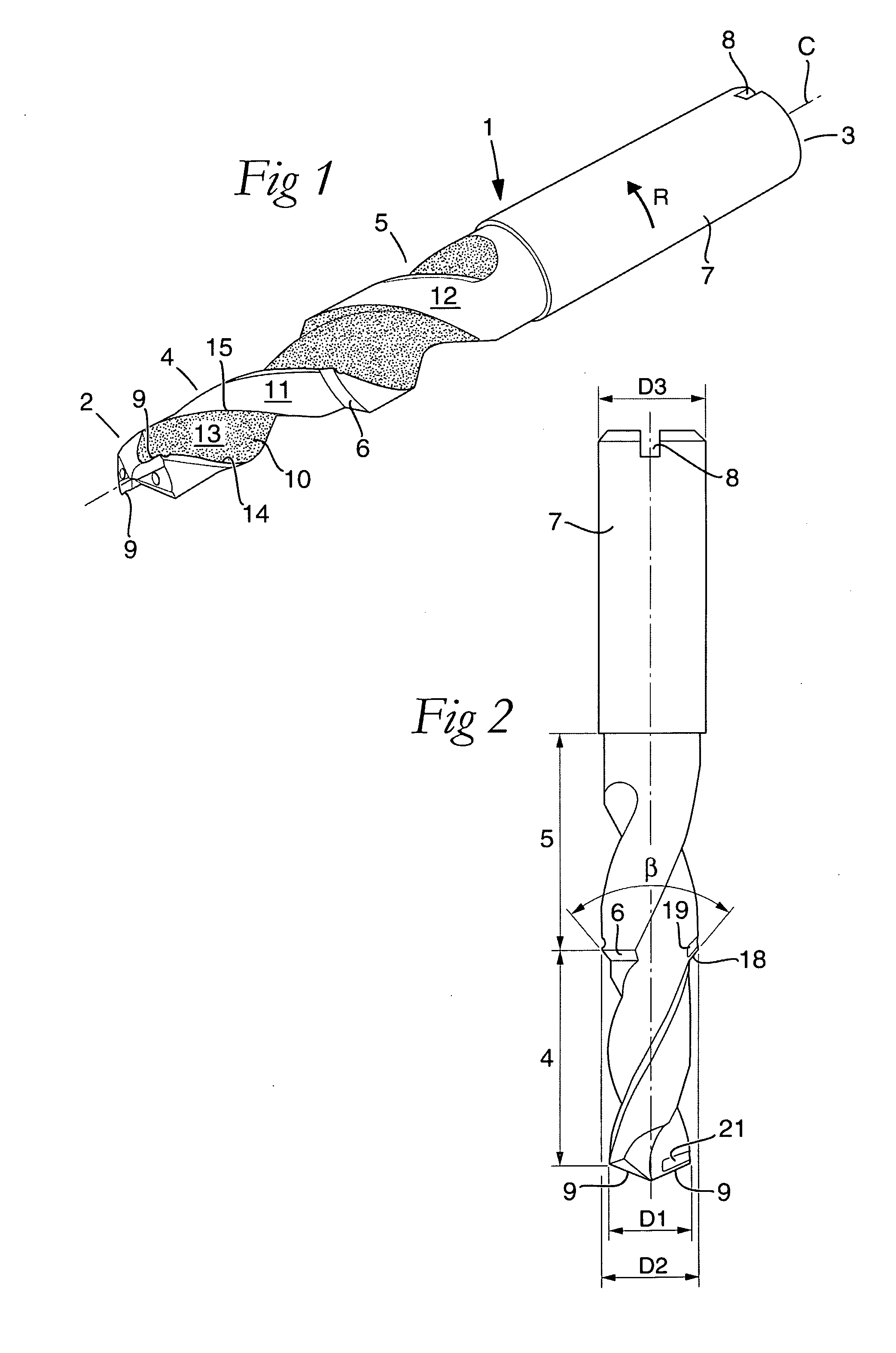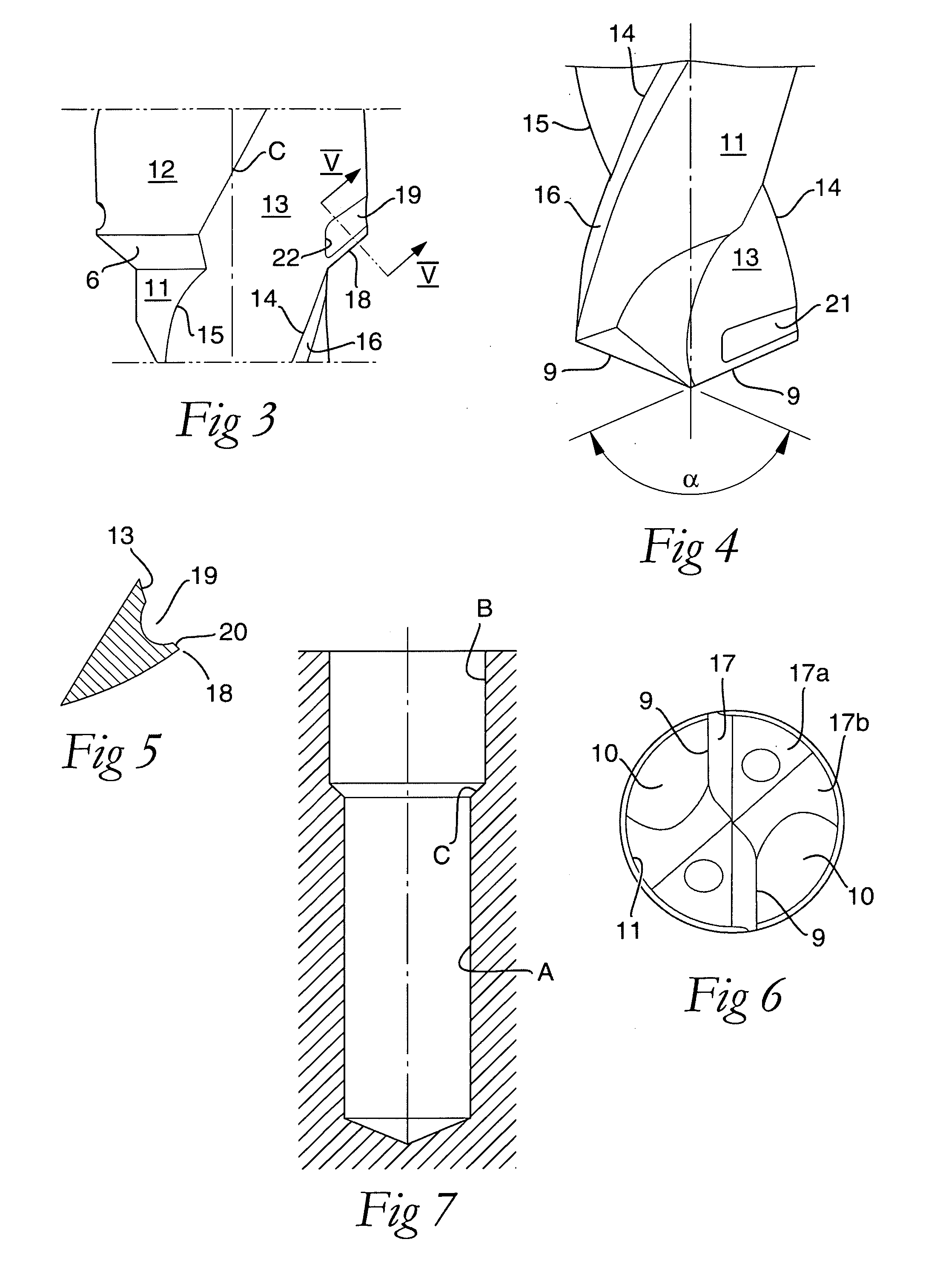Solid step drill
a drill bit and step technology, applied in the direction of twist drills, manufacturing tools, wood boring tools, etc., can solve the problems of non-solid drills, high costs, and discarded or, if possible, regrounding
- Summary
- Abstract
- Description
- Claims
- Application Information
AI Technical Summary
Benefits of technology
Problems solved by technology
Method used
Image
Examples
Embodiment Construction
[0022]In the drawings, the embodiment is exemplified in the form of a solid step drill made as a twist drill, i.e., the chip flutes of the drill are in this case helicoidal (contrary to the straight chip flutes found in so-called tap borers). The drill is in the form of a long narrow body 1, which comprises a front tip 2 and a rear end 3 between which a center axis C extends around which the drill is rotatable in a predetermined direction R. Two essentially cylindrical sections in the body are concentric with the center axis C, viz. a first, front section 4 that extends rearward from the tip 2, and a second section 5 being behind, which is spaced-apart from the first section via a so-called step 6. As is seen in FIG. 2, the front section 4 has a diameter D1 that is smaller than the diameter D2 of the second section 5. In this case, also a rear fastening part 7, the diameter D3 of which is greater than D2, is included in the drill. For the transfer of torque to the drill, the fasteni...
PUM
| Property | Measurement | Unit |
|---|---|---|
| diameter | aaaaa | aaaaa |
| step angle | aaaaa | aaaaa |
| step angle | aaaaa | aaaaa |
Abstract
Description
Claims
Application Information
 Login to View More
Login to View More - R&D
- Intellectual Property
- Life Sciences
- Materials
- Tech Scout
- Unparalleled Data Quality
- Higher Quality Content
- 60% Fewer Hallucinations
Browse by: Latest US Patents, China's latest patents, Technical Efficacy Thesaurus, Application Domain, Technology Topic, Popular Technical Reports.
© 2025 PatSnap. All rights reserved.Legal|Privacy policy|Modern Slavery Act Transparency Statement|Sitemap|About US| Contact US: help@patsnap.com



